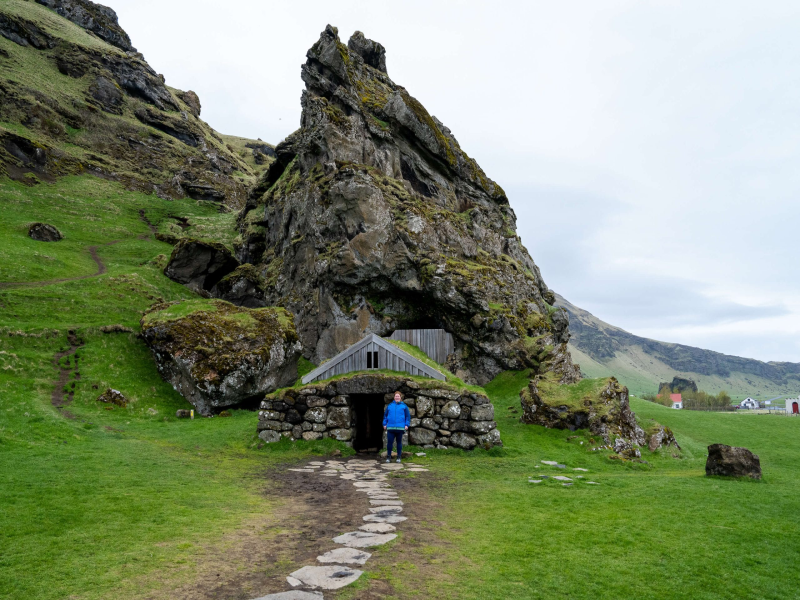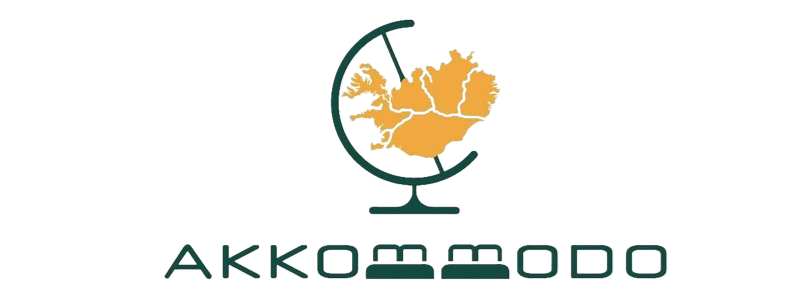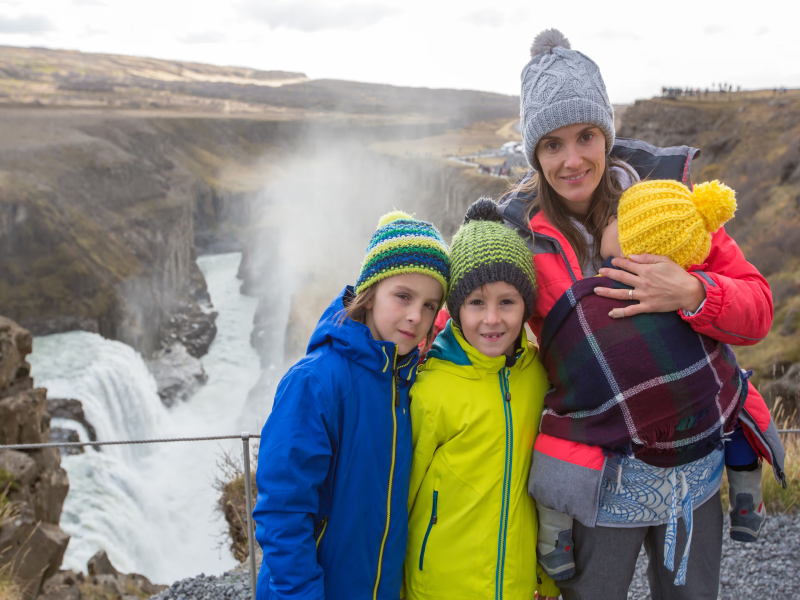Being an island nation, it has a very vivid history that traces its roots back to the Vikings. Rich historical myths, fossils, unique soil, geology and glaciers that dominate the area today were painted by legends of the Norse colonies, established on this island over a thousand years ago. These are the tales told in the Icelandic sagas; stories of love, war, named personalities and events from the lives of the Viking seafarers. This blog post is your guide through various cultural avenues of history and art that you are welcome to Read more about the Vikings and explore the rich culture of Iceland.

The Sagas: Windows to the Viking Past – Tracing the Sagas
To truly understand Iceland’s Viking heritage, we must first delve into the heart of their storytelling tradition: the Icelandic Sagas. These historical masterpieces act as windows through which people have a glimpse and learn more about the culture, beliefs and lives of the Vikings who brought new civilization to this island country.
What are the Icelandic Sagas?
The Icelandic Sagas are the medieval, and mainly 13th-century works of historical prose narrative that portray the history of Iceland in the period of the settlement, mainly of the 10th and the 11th centuries. Just think about them as the ‘’Game of Thrones’’ Wars – they are full of drama, hatred, passion and discoveries! These are not only mythical stories; they are storytelling histories derived from the unbelievable source; word of mouth.
Some of the most famous sagas include:
- Njáls saga: It is one of the biggest Icelandic sagas which present the story of feuds, revenge and legal struggles.
- Egils saga: The saga of Egill, a typically Icelandic poet, warrior and farmer, whose character and life were not easily thoroughly understood.
- Laxdæla saga: A story of love and death, set in the Icelandic Laxárdalur valley presenting both powerful and sensible women and brave men.
The sagas can be categorized into different types:
- Family sagas: Specialises in the dramas of Icelandic families’ lives, hatreds and spites.
- Kings’ sagas: Is a record of the kings of Norway.
- Sagas of Icelanders: A more general classification of a number of topics and persons.
In what ways are the Sagas able to point to Viking cultivation?
If the primary source is the sagas one can got deep insight into the Viking’s life and their culture which represents their views, religion, and hierarchical system. They highlight themes of:
- Honor: Both parties stressed the importance of preserving on’s honour and honouring formal vows in the society of Norse velocity.
- Courage: Both courage in warfare or other adversities were greatly esteemed.
- Revenge: A fascination with blood feuds and getting their due for offenses also ran high.
- Family ties: Protection of own family and other kin was utmost important.
- Fate: The Turks view their existence in accordance with the destiny and the fates that governed their lives.
Through the sagas, we gain insights into:
- Social structures: The graded society in which some people used others and it featured chieftains, fr shut, men, and slaves.
- Legal systems: The Alþingi, the early Icelandic parlaiment had considerable role in regulation and enforcement of law and order by handling notorious conflicts.
- Beliefs: The sagas offer a few peeks at actual Norse mythology, attitudes toward death and the afterlife, and the significance of such conceptions as magic and the supernatural.
- Daily life: They include such scenes as farming, fishing, working at the craft, and celebrations of various kinds.
What more can I know about the Sagas?
If you’re eager to delve deeper into the world of the Icelandic Sagas, here are some excellent resources:
- The Árni Magnússon Institute for Icelandic Studies: As the center of Icelandic manuscripts, this institute possesses the reproduction of original saga texts.
- The National Museum of Iceland: This museum presents Icelandic history, the Viking Age, sagas and other related subjects.
- The Saga Museum in Reykjavík: The featured local sagas are depicted in life-size figures and installations in this become-a-museum style museum and visitor center.
You can also explore online resources like:
- The Icelandic Saga Database: Offers the possibility to read the digital copies or English translations of all the sagas.
- Various online platforms: Provide new translations and their interpretations of the sagas to the non-specialist reader.
If interested in the Icelandic Sagas and its role in preserving Viking history and culture you will find this resource helpful.
Unveiling Iceland’s Viking History
These sagas are not simply set of stories written in books; in fact they are interlaced into the geography of Iceland. So let’s go beyond the books and leap into the history itself, to the Viking age landmarks and places.
Reykjavík: Exploring the Viking Roots
The tour starts in Reykjavík, the capital and largest city of Iceland. Despite many ways being new, Reykjavík has some hints at its Viking era and they are all up for finding.
- The Settlement Exhibition: Old Viking long house, the existing one is one of the first buildings the Vikings built in Iceland in year 871 AD. When passing through these historical remains of buildings, people can really try to picture the Vikings who inhabited them.
o Fact: The longhouse was brought to light in 2001 during the construction and helped People to get deeper understanding of early patterns of Vikings.
- Reykjavík 871±2: This museum is next to the Settlement Exhibition; It displays items found during the archaeological work in the central part of the island. These artifacts include tools, weapons, jewelry and items found in daily use by the Vikings who settled this region originally.
o Quote: “The nine objects exhibit present the history of the residents in this region one thousand years ago, their lifestyle, and bond with the earth.” – From the museum’s website.
- Hallgrímskirkja Church: Although this church is not motifs directly linked to the Vikings, its architecture was design for the carved basalt columns in Iceland and the firm relationship between the Vikings and the land.
Beyond the Capital: Journeying Through Saga Sites
- Þingvellir National Park: The park remains special due to its historical importance with UNESCO folding it under the World Heritage Sites category. This was where in the year 930 AD the vikingsfounded the Alþingi, billed as one of the oldest parliaments in the world. It is easy now to picture the assemblies of the chieftains and lawmakers against the backdrop of volcanic planes and rifts.
o Fact: Alþingi convened at Þingvellir every summer since 930 and till 1798, which makes it a focus of democratic and independent Iceland.
- Borgarnes: The beautiful town in the Western part of Iceland has strong connection with Egil’s Saga. The museum of the Settlement Center in Borgarnes demonstrates Egill Skallagrímsson’s saga and the process of the settlement of the area.
o Tip: Just on the west of the town, take a random walk around the coast, picturing how Egill arrived and felt about this territory.
- The Westfjords: Yet few places else capture the ethos of the paperback sagas of rugged fjords, small settlements and stories of survival this bleak and remote region in NW Iceland does. It even looks like the landscape was telling tales of the Vikings who faced such environment.
o Quote: “The Westfjords are a place on the Earth where you can feel that they live here since ancient times or that was here present when a lot of saber rattling occurred.” The Westfjords by a travel writer.
To visit these sites is to focus on the world of the sagas, to get physically into Vikings’ world and thus feel a part of something immense.

Immersing in Viking Culture
Exploring Viking history in Iceland does not end with the mainly historical attractions like historical sites, and museums. This way we can see that for one to feel the viking spirit fully there exists culture, practices and even food that people of the Viking age had.
Living History Museums
You can actually travel to Iceland and be taken through the era of Vikings through history related activities such as closed installations.
- Eiríksstaðir Living Museum: Stand Eg Eiríksstaðir is a Viking longhouse and farm under construction, which will located in West Iceland. In this exhibition you can find out how the Vikings used to live, what work they did or how they used the time, and how they influenced the geography of the areas they conquered. Interpreters in various disguises depict as to how people lived in the olden days, how articles were made and farmed amongst other things.
- Fact: The site marks the authentic birthplace of Leif Ericson, the viking who is known to have sailed to North America some five hundred years before Columbus in around 1000 AD.
- The Viking World Museum in Reykjanesbær: This museum includes the Íslendingur, an exact duplicate of a Viking ship that was sailed from Iceland to North America in the summer of 2000 in honor of Leif Ericson’s pioneering voyage. The museum also has sections devoted to the Vikings’ adventure, their sailing skills and their everyday existence.
- Tip: Find out which days are available for Viking shipbuilding spinning and weaving demonstrations among other activities.
Festivals and Events
The Icelandic people celebrate and observe Viking culture through several programmes and festivals with live performances of the Viking culture.
• Viking Festival in Hafnarfjörður: Claimed to take place every June, during this festival, Hafnarfjörður turns into a Viking village. You might watch a mock battle, craft activities including armouring and textile making, stories and songs with characters in Viking costume, and a Viking trading village where visitors can buy leathery items handcrafted by the performers and vendors.
o Data: The Viking Festival is popular as cultural event with thousands of people including local people and tourists visiting the festival each year.
• Local Events: In Iceland local civil societies and communities come forward to arrange programs related to Viking age, they read sagas, perform viking music and arts and crafts. Visit local tv stations, newspapers or check with the tourist informations for events during your stay there.
Food and Drink
Without a doubt, one can also register the reflection of Viking heritage in local Icelandic dishes. Not all of the dishes might look very appealing in today’s world however that does not necessarily mean that meals of the Viking era cannot be tasted.
• Traditional Icelandic Cuisine: The following are among the meals typical for the Icelandic cuisine which would have ancestral links to the Viking period:
- Skyr: A paste formed from milk like a yogurt where the Vikings may have taken it in order to supplement.
- Dried fish: One of the old preservation techniques employed by Vikings, dried fish is a popular item available in Iceland.
- Lamb: Sheep farming was an inseparable part of the Vikings diet and Icelandic cuisine still includes popular lamb dishes.
• Modern Interpretations: Many restaurants as well as food producers serve Viking food with great additions to the present day, still they use original ingredients and techniques.
- Mead: Aber this fermented honey drink was one of the most favorite drinks of the Viking. Today, mead is made in Iceland and quite often prepared with the addition of the local herbs and berries.
If you take part in these cultural events, you will be able to remember how the people of Viking Iceland looked like, heard like, and tasted like.
Planning Your Viking Heritage Tour
If you are feeling inspired to start your own Viking heritage tour of Iceland, you now have the perfect starting point. Here’s some practical information to help you plan your adventure:
Getting Around Iceland
Transportation is a method of getting to various exciting and interesting geographical terrains and appealing historical landmarks in Iceland.
• Car Rentals: Thus, car rental is the most suitable option in terms of flexibility to move at any pace, visit places you hardly meet while using public transport, and get to many secret places.
- Tip: It is advisable to hire a 4 by 4 car if you intend on travelling in the highlands or, especially, during winter.
• Tours: Sightseeing tours come from a packaged option where tourists do not have to make any arrangements on their own, and they are accompanied by Vasquez’s guide. Depending on the desired length and type of the trip, there are various tours for everyone, starting with the day tour and ending with several days cruises.
- List of Tour Operators: [Provide links to credible tour operators to commercial Viking heritage tours]
• Public Transportation: Iceland has set system of buses for public transport for major towns and cities. It maybe does not get to every corner of the earth it covers the big centers for a fraction of the cost of air travel.
- Website: Please, refer to the official website for the public transport in Iceland (link to the website is provided above).
Highlight: Actually, the Ring Road – Route 1 – does circumnavigate Iceland and it is the most attractive way to combine many Viking history landmarks.
Accommodation
There are wide variety of accommodation available in Iceland depending on one’s preference and economical status.
- Hotels: Basic to very expensive and almost everything in between can be found in hotels located all over Iceland.
- Guesthouses: Guesthouses are more on the personal and local side as they have home like circumferences and most of the times, guesthouse owners also provide services.
- Farm Stays: If you really want to feel the spirit of Iceland, consider staying in a working farm where you’ll be fine-tuned with Icelandic countryside and be briefly introduced to farming.
Recommendations:
- Near Þingvellir National Park: For the visitors’ convenience, here are the names and links to the hotels/guesthouses nearby Þingvellir:
- In Borgarnes: The following hotels and guesthouses are located in Borgarnes:
Tips for Travelers
- Packing: There will always be chances for shopping, but other than being prepared for all kinds of weather because of the unpredictable Icelandic climate, there aren’t many other things which could be done without. As accessories, layers are needed, along with waterproof and windproof garments.
- Currency: The official currency of Iceland is the Icelandic króna abbreviated as ISK all over the country. There are numerous opportunities to pay with credit, or debit, cards.
- Language: The official language of the country is Icelandic. Nevertheless, the English language is well understood, most of all, in such countries as significantly popular touristic destinations.
- Respecting Local Customs: To a certain extent Icelanders are polite and respect nature. Pay special attention to cultural peculiarities.
- Responsible Travel: The most important advice would be to practice low impact tourism, avoid any contact with wildlife, and try to patronize local business.
So thinking through these pointers would be beneficial to help make your trip a great one as you follow the sagas and discover more about the Vikings of Iceland.
Embrace the Spirit of the Vikings
At the end of the voyage through the trip that followed the actual tales and the historical outline of Iceland, we should interpret the meaning of the Viking legacy. The Icelandic Sagas, Historical places, museums, and performances provide a fascinating look into the habits, beliefs, and way of life of the Vikings who constituted the first inhabitants of this beautiful island.
From city life in Iceland’s capital Reykjavik to exploring the fabulous scenery of Þingvellir National Park or lonely Westfjords – Viking’s echoes are heard in Iceland. Allowing ourself to get to know these ancient people through their stories, their settlements, and their way of life, gives us the opportunity to understand them in terms of their abilities to survive and create in the face of adversity; and their relationship with the land.
Perhaps you are interested in history, in heroes and wars, their societies and laws or you want to see the amazing landscape that surrounded them Iceland gives a perfect chance to come closer to Viking Age.
So, what are you waiting for? Don’t wait any further; begin organizing your Viking ancestry tour around Iceland right now.
Step into a world that will take you to another epoch, fire your fantasy, and at last help you to value the Vikings’ impact on Iceland.

Conclusion
Iceland’s Viking saga is an inspirational and colourful story written with the narrative of impressive historical tales, noble archaeological remains and rich cultural events. A walk through the ruins, historical recreations, a hike through the scenery that inspired the sagas and legends gives a sense of who the Vikings were and a new respect for their heritage. Therefore, whether you are history lover, literature lover or just an adventurous soul who wants to walk on the ‘land of fire and ice’ try to plan your tour and journey to explore Iceland to find the Viking soul of country.
References
- Books and Publications
- Byock, Jesse L. The Saga of the Volsungs: The Norse Epic of Sigurd the Dragon Slayer. University of California Press, 1990.
- Ármann Jakobsson and Sverrir Jakobsson, eds. The Routledge Research Companion to the Medieval Icelandic Sagas. Routledge, 2017.
- Web Sources
- Visit Iceland. “The Viking Heritage of Iceland.” Accessed January 3, 2025. https://www.visiticeland.com
- National Museum of Iceland. “Icelandic Sagas: Cultural Treasures of the Viking Age.” Accessed January 3, 2025. https://www.thjodminjasafn.is
- Academic Papers
- Clover, Carol J. “The Politics of Scarcity: Viking Saga Studies.” Scandinavian Studies, vol. 61, no. 4, 1989, pp. 441–463.
- Tourism and Travel Resources
- Lonely Planet. “Iceland’s Viking History: Exploring Saga Sites.” Accessed January 3, 2025. https://www.lonelyplanet.com
- Media and Documentaries
- BBC Travel. Iceland: Land of the Sagas. Directed by Sarah Johnson, BBC, 2023.




